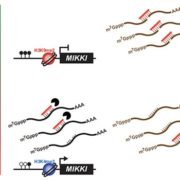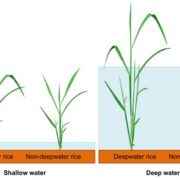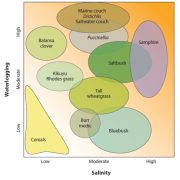Drought-Responsive Novel MicroRNAs in Grapevine
 European grapevines (Vitis vinifera) are routinely grafted on interspecific hybrid rootstocks mainly to control infestation by phylloxera (Daktulosphaira vitifoliae). Research has shown, however, that these rootstocks can also affect scion growth vigor and resistance to abiotic stresses such as drought. Thus, rootstock management may be a promising tool to enhance the resilience of grapevine to water scarcity. A recent transcriptomic study demonstrated that grafting can determine stock-specific transcript concentration changes in the grapevine scion and that this depends at least in part on modifications in the concentration of microRNAs (miRNAs). Previous studies identified conserved and novel miRNAs in grapevine, and a grapevine miRNA expression atlas has been published recently. However, no studies specifically addressing the identification of drought stress-responsive miRNAs have been reported in Vitis spp. Further investigation of such miRNAs could offer important clues concerning their specific function within the context of regulatory networks promoting grapevine adaptation to stressful environments. Pagliarani et al. () provide insights concerning the regulatory effect exerted by drought stress on the abundance of grapevine miRNAs. In particular, they identified novel putative miRNAs in roots and leaves of two grapevine genotypes, cv Cabernet Sauvignon, a widely known commercial variety, and the recently selected, water stress-tolerant Vitis hybrid M4. Drought effects on miRNA abundance differed between the two genotypes. Furthermore, the concentration of drought-responsive miRNAs in each genotype was affected by reciprocal grafting, suggesting either the movement of signals inducing miRNA expression in the graft partner or, possibly, miRNA transport between scion and rootstock. These results open new perspectives in the selection of rootstocks for improving grapevine adaptation to drought.
European grapevines (Vitis vinifera) are routinely grafted on interspecific hybrid rootstocks mainly to control infestation by phylloxera (Daktulosphaira vitifoliae). Research has shown, however, that these rootstocks can also affect scion growth vigor and resistance to abiotic stresses such as drought. Thus, rootstock management may be a promising tool to enhance the resilience of grapevine to water scarcity. A recent transcriptomic study demonstrated that grafting can determine stock-specific transcript concentration changes in the grapevine scion and that this depends at least in part on modifications in the concentration of microRNAs (miRNAs). Previous studies identified conserved and novel miRNAs in grapevine, and a grapevine miRNA expression atlas has been published recently. However, no studies specifically addressing the identification of drought stress-responsive miRNAs have been reported in Vitis spp. Further investigation of such miRNAs could offer important clues concerning their specific function within the context of regulatory networks promoting grapevine adaptation to stressful environments. Pagliarani et al. () provide insights concerning the regulatory effect exerted by drought stress on the abundance of grapevine miRNAs. In particular, they identified novel putative miRNAs in roots and leaves of two grapevine genotypes, cv Cabernet Sauvignon, a widely known commercial variety, and the recently selected, water stress-tolerant Vitis hybrid M4. Drought effects on miRNA abundance differed between the two genotypes. Furthermore, the concentration of drought-responsive miRNAs in each genotype was affected by reciprocal grafting, suggesting either the movement of signals inducing miRNA expression in the graft partner or, possibly, miRNA transport between scion and rootstock. These results open new perspectives in the selection of rootstocks for improving grapevine adaptation to drought.










Leave a Reply
Want to join the discussion?Feel free to contribute!